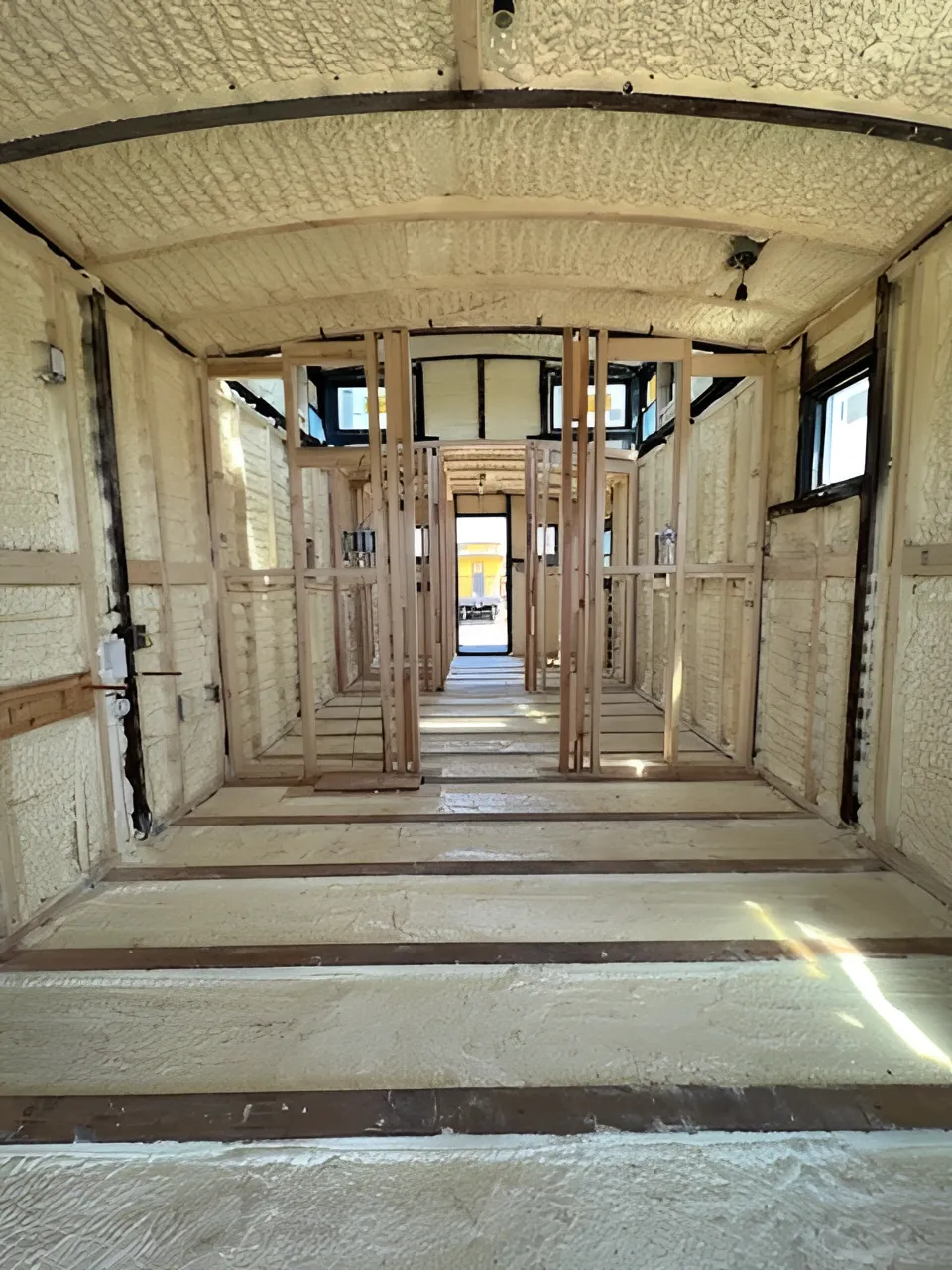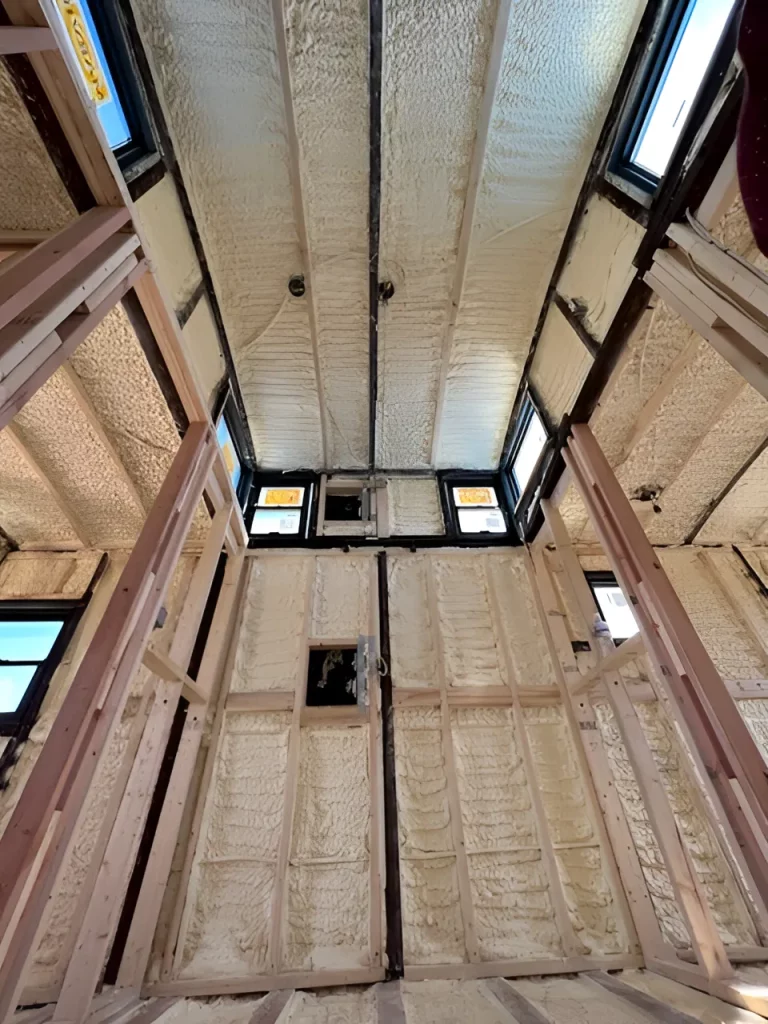
Spray foam insulation can be an excellent choice for older homes in Canton, OH, but requires careful evaluation of existing conditions and proper preparation. Older homes typically benefit significantly from spray foam’s air sealing properties and superior thermal performance, addressing common issues like drafts, moisture problems, and inconsistent temperatures that plague many pre-1980 structures.
The decision hinges on factors including the home’s structural integrity, existing ventilation systems, and moisture management needs. Professional assessment becomes crucial since older homes often contain unique challenges such as knob-and-tube wiring, asbestos materials, or inadequate vapor barriers that must be addressed before installation.
Older homes in Canton face specific challenges due to the construction methods used decades ago. These structures often lack adequate insulation, have settling issues creating gaps, and feature building materials that don’t provide effective air barriers. Spray foam addresses these deficiencies by creating a continuous insulation and air barrier system.
The thermal bridging common in older construction gets eliminated when spray foam fills cavities completely. Traditional insulation methods often leave gaps around framing members, electrical boxes, and plumbing penetrations. Spray foam expands to fill these spaces, creating a more effective thermal envelope.
Bonus Tip: Check for knob-and-tube electrical systems before spray foam installation. These systems require specific clearances and may need upgrading to meet current safety codes when combined with spray foam insulation.
| Insulation Type | R-Value per Inch | Moisture Barrier | Air Sealing | Best Application |
|---|---|---|---|---|
| Closed-Cell Spray Foam | 6.0-7.0 | Excellent | Superior | Exterior walls, basements, crawl spaces |
| Open-Cell Spray Foam | 3.5-4.0 | Moderate | Good | Interior walls, attics with proper ventilation |
| Traditional Fiberglass | 2.2-3.8 | Poor | Minimal | Limited effectiveness in older homes |

Older homes require thorough preparation before spray foam installation. Electrical systems need inspection to ensure compatibility with foam insulation. Plumbing systems should be checked for leaks since spray foam can make future repairs more challenging.
Asbestos testing becomes mandatory in homes built before 1980. Many older homes contain asbestos in various materials, and disturbing these materials during insulation work requires professional abatement. Lead paint testing may also be necessary if surface preparation involves scraping or sanding.
Ventilation systems need evaluation and possible modification. Older homes often rely on natural air infiltration for ventilation, which spray foam eliminates. Mechanical ventilation systems may require installation to maintain indoor air quality.
Northeast Ohio’s climate zone requires specific insulation strategies. The region experiences approximately 6,000 heating degree days annually, making effective insulation crucial for energy efficiency. Canton’s humidity levels during the summer months can create moisture management challenges in older homes.
Spray foam’s performance in this climate zone demonstrates clear advantages. The air sealing properties reduce infiltration that causes ice dams on older homes with inadequate attic insulation. The moisture management capabilities help prevent condensation issues common in homes with thermal bridging.
Bonus Tip: Consider installing spray foam in rim joists and band boards first. These areas typically provide the highest return on investment in older homes and can often be completed without major disruption to living spaces.
Budget planning should include not just insulation costs but also necessary preparatory work. Older homes often require electrical updates, ventilation improvements, or structural repairs that add to project scope. Professional energy audits can help prioritize which areas will provide the greatest benefit.
Timing considerations become important for older homes since work may uncover unexpected issues requiring additional time. Planning installation during moderate weather periods allows for proper curing and reduces stress on aging building systems.
Building permit requirements vary by municipality. Some areas require permits for significant insulation upgrades, especially when electrical or ventilation modifications are involved. Check with local building departments before beginning work.
Professional installation ensures proper application and addresses the unique challenges older homes present. Residential spray foam insulation services include a comprehensive assessment of existing conditions and recommendations for preparation work.
Closed-cell spray foam insulation provides maximum thermal performance and moisture protection for challenging applications like basements and crawl spaces common in older homes. This service includes proper surface preparation and application techniques specific to vintage construction methods.
Open-cell spray foam insulation offers cost-effective solutions for interior applications where moisture barriers aren’t critical. This service works well for attic applications and interior wall cavities in older homes with proper ventilation systems.
Most older homes can accommodate spray foam insulation with proper preparation, though electrical and ventilation systems often require updates to meet current codes when combined with improved air sealing. Professional assessment identifies compatibility issues before installation begins.
Installation timing concerns arise due to weather sensitivity and curing requirements. Professional installers schedule work during appropriate temperature and humidity conditions to ensure proper foam performance and curing. Spring and fall typically provide optimal conditions.
Long-term maintenance questions center on accessibility for repairs. While spray foam makes some maintenance more challenging, proper installation techniques can maintain access to critical systems while providing effective insulation performance.
Bonus Tip: Document existing conditions with photos before installation begins. This helps with future maintenance and provides reference points if issues arise later.
A professional evaluation determines whether spray foam suits your specific older home situation. Experienced installers assess structural conditions, existing systems, and moisture management needs to develop appropriate installation strategies.
Quality installation requires specialized equipment and expertise particularly important for older homes with unique conditions. Professional installers understand preparation requirements and application techniques that ensure long-term performance in vintage construction.
Contact Ohio Valley Spray Foam at (740) 373-3626 or [email protected] to schedule a comprehensive assessment of your older home’s insulation needs. Professional evaluation identifies the most effective approach for your specific situation and ensures proper preparation for successful installation.
Properly applied spray foam won’t damage structural elements. Professional installers assess existing conditions and use appropriate expansion ratios to avoid over-pressurizing wall cavities or ceiling structures. Pre-installation evaluation identifies any structural concerns that need addressing before foam application.
Spray foam creates an effective air barrier that eliminates uncontrolled air infiltration. Older homes require mechanical ventilation systems to maintain indoor air quality once air sealing is completed. Professional assessment determines appropriate ventilation strategies for your specific home configuration.
Installation around older electrical systems requires careful evaluation and often upgrades to meet current safety codes. Knob-and-tube wiring typically needs replacement or modification before spray foam installation. Licensed electricians should inspect and approve electrical systems before foam application begins.
Access for future repairs becomes more challenging with spray foam but remains possible with proper planning. Professional installers can maintain access panels at critical locations and use techniques that allow for future modifications without completely removing insulation systems.
Quality spray foam insulation maintains performance for decades when properly installed. Older homes with proper preparation and professional installation can expect similar longevity to newer construction applications. Regular building maintenance helps ensure continued insulation performance over time.